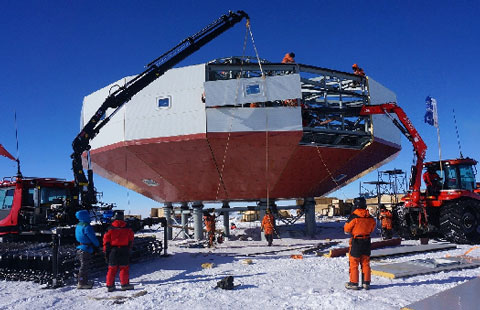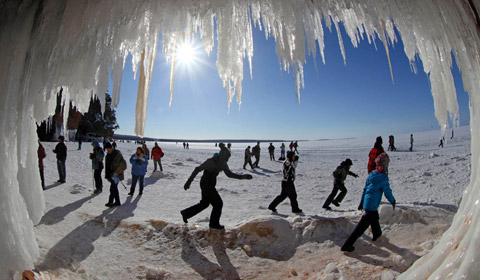Hubble space telescope capable of measuring nearby galaxy
Updated: 2014-02-19 10:07
(Xinhua)
|
||||||||
WASHINGTON -- US astronomers have used the Hubble Space Telescope to precisely measure the rotation rate of a neighboring galaxy for the first time, US space agency NASA said Tuesday.
The study showed that the central part of the neighboring galaxy, called the Large Magellanic Cloud (LMC), completes a rotation every 250 million years. It takes our sun the same amount of time to complete a rotation around the center of our Milky Way galaxy.
"By using Hubble to study the stars' motions over several years, we can actually, for the first time, see a galaxy rotate in the plane of the sky," said lead author Roeland van der Marel of the Space Telescope Science Institute in Baltimore, Maryland, in a NASA statement.
The researchers said Hubble is the only telescope that can make this kind of observation because of its sharp resolution and its image stability.
"If we imagine a human on the moon, Hubble's precision would allow us to determine the speed at which the person's hair grows," van der Marel explained. "This precision is crucial, because the apparent stellar motions are so small because of the galaxy's distance. You can think of the LMC as a clock in the sky, on which the hands take 250 million years to make one revolution. We know the clock's hands move, but even with Hubble we need to stare at them for several years to see any movement."
For the past century, astronomers have calculated galaxy rotation rates by observing a slight shift in the spectrum, known as the Doppler Effect, of its starlight.
The newly measured Hubble motions and the Doppler motions measured previously provide complementary information about the rotation rate of the LMC, located 170,000 light-years away, NASA said.
"Studying this nearby galaxy by tracking the stars' movements gives us a better understanding of the internal structure of disk galaxies," said co-author Nitya Kallivayalil of the University of Virginia. "Knowing a galaxy's rotation rate offers insight into how a galaxy formed, and it can be used to calculate its mass."
The team next plans to use Hubble to measure the stellar motions in the LMC's diminutive cousin, the Small Magellanic Cloud. NASA said the study should yield improved insight into how the galaxies are moving around each other and around the Milky Way.
The findings were published in the Astrophysical Journal.
|
 |

|

 Spirit of adventure lives on in Antarctic
Spirit of adventure lives on in Antarctic
 Prince Charles dances in traditional Saudi dress
Prince Charles dances in traditional Saudi dress
 Maglev trains speeding toward greener future
Maglev trains speeding toward greener future
 Building collapse at Korean resort kills 10
Building collapse at Korean resort kills 10
 The big ballet stage
The big ballet stage
 17 more cement plants biting the dust
17 more cement plants biting the dust
 World's largest freshwater lake frozen
World's largest freshwater lake frozen
 American photographer wins World Press Photo 2013
American photographer wins World Press Photo 2013
Most Viewed
Editor's Picks

|

|

|

|

|

|
Today's Top News
Reforms to put safety first for low-level flights
PLA soldiers bigger, need new gear
China's aviation school banks on global ties
Green timber preferred overseas but not locally
NHK head regrets history words
Police to root out organizers of prostitution
Li to officials: Move ahead with improvements
'Equal' talks open to Taipei
US Weekly

|

|




